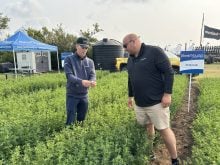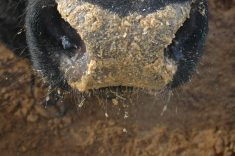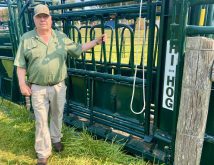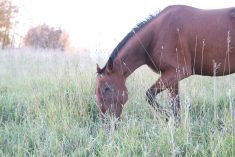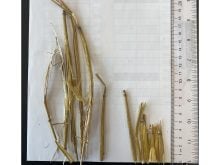WINNIPEG — Adding enzymes to cattle feed is not a new concept.
It was studied in the 1990s, when livestock experts with Agriculture Canada learned that enzyme supplements can increase the average daily gain in heifers by nine per cent.
A University of Manitoba scientist is hoping to build upon that knowledge. In 2025, the Beef Cattle Research Cattle will fund a proof of concept project for Emma McGeough, associate professor of animal scientist at the U of M.
Read Also

VIDEO: Ag in Motion documentary launches second season
The second season of the the Western Producer’s documentary series about Ag in Motion launched Oct. 8.
McGeough wants to know if enzymes can improve nutrient uptake in cattle that have forage-based diets.
As of mid-January, McGeough wasn’t ready to talk about the project. She was still deciding what strains of enzymes to use in the research.
Enzymes aren’t something that come up in daily conversation, but they play an important role in humans and livestock. They are proteins that help speed up metabolism, or chemical reactions.
“They build some substances and break others down. All living things have enzymes,” says clevelandclinic.org.
“Our bodies naturally produce enzymes, but enzymes are also in manufactured products and food.”
In livestock, enzymes are used in low levels in poultry diets. They help chickens and other birds break down the fibre in their diet and improve digestion.
Enzymes are also added to swine and sometimes cattle rations, but their use is not a standard practice.
“The share of the feed enzymes … in the global feed additive market is estimated to be only 3.8 per cent in 2022,” says Feed & Additive magazine.
Karen Beauchemin, a retired Agriculture Canada scientist who specialized in ruminant nutrition, published a paper on enzymes and feedlot diets in 1999.
Beauchemin and her team added a mixture of enzymes to the ration of heifers in a commercial feedlot near Lethbridge. They found that enzymes can enhance both feed efficiency and daily gain.
“Adding a fibrolytic enzyme supplement to the diet fed to commercial feedlot cattle improved weight gain by nine percent and … improved feed efficiency by 10 percent, without affecting feed intake,” says the paper that was published in the Canadian Journal of Animal Science.
Feed enzymes are eventually “degraded” in the digestive tract of cattle, so they pose no risk of residues in tissues or milk, Beauchemin wrote.
“Feed enzyme supplements provide a useful means of improving digestion of high-concentrate diets.”
A more recent paper, from 2022, determined that adding enzymes to dairy cows’ diet increased the quantity and quality of milk.
Scientists from Penn State University used enzymes that came from two fungi with complicated names: Aspergillus oryzae and Aspergillus niger.
The researchers included the enzymes in the rations of 48 Holstein cows for 10 weeks and then evaluated the cows’ performance, metabolism and digestion.
Dairy cows fed the enzymes produced more milk, and the milk “had higher concentrations of protein, lactose and other desirable solids,” says the Penn State website.
The additional enzymes give the digestive process a boost, which explains why the Holstein cows were more productive, said Leoni Martins, associate professor of dairy nutrition at Penn State.
“Laboratory studies have suggested we could improve ruminal fermentation and feed digestion,” Martins said in 2022.
“We are trying to help the rumen microbes do what they do…. The microbes produce these enzymes that break down fibre, but we are trying to supplement additional enzymes to enhance fermentation in the rumen.”
The Beef Cattle Research Council spends a fraction of its budget on proof of concept projects, such as McGeough’s work on enzymes. However, this sort of science can make a difference, said BCRC chair Craig Lehr.
“These projects require a small portion of Canadian beef cattle check-off dollars and provide key insights to progress the industry forward.”
Contact robert.arnason@producer.com







